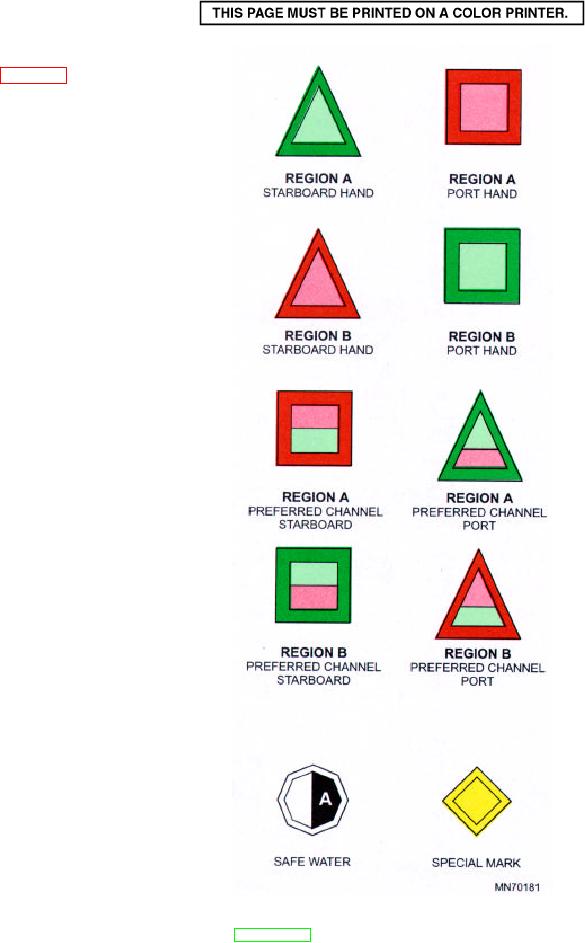
The duplicate mark may carry a radar beacon
(RACON), coded D (-.), showing a signal length of 1
nautical mile on a radar display.
DAYMARKS
Unlighted aids to navigation (except unlighted
buoys) are called daymarks (fig. 6-27). A daymark may
consist of a single pile with a mark on top of it, a spar
supporting a cask, a slate or masonry tower, or any of
several structures.
Daymarks, like lighthouses and light structures, are
usually colored, to distinguish them from their
surroundings and make them easy to identify.
Daymarks marking channels are colored and numbered
like channel buoys. Many are fitted with reflectors that
show the same colors a lighted buoy would show at
night in the same position.
AIDS IN THE INTRACOASTAL
WATERWAY
The Intracoastal Waterway, called the inland
waterway, is a channel in which a light-draft vessel can
navigate coastwise from the Chesapeake Bay almost to
the Mexican border, remaining inside the natural or
artificial breakwaters for almost the entire length of the
trip.
Every buoy, daymark, or light structure along the
Intracoastal Waterway has part of its surface painted
yellow--the distinctive coloring adopted for this
waterway. Somewhere on a lighted buoy is a band or a
border of yellow.
Red buoys and daymarks are to the right, green to
the left, as you proceed from the Chesapeake Bay
toward Mexico. As in other channels, red buoys have
even numbers; green buoys, odd numbers. Because the
numbers would increase excessively in such a long line
of buoys, they are numbered in groups that usually
contain no more than 200 buoys. At certain natural
dividing points, numbering begins again at one.
Lights on buoys in the Intracoastal Waterway
follow the standard system of red lights on red buoys
and green lights on green buoys. Lights on lighted aids
besides buoys also agree with the standard rules for
lights on aids to navigation.
DISTRESS SIGNALS
When a vessel or seaplane on the water is in distress
Figure 6-27.--IALA Maritime Buoyage System, lateral
daymark
and requires assistance from other vessels or from the
6-23

